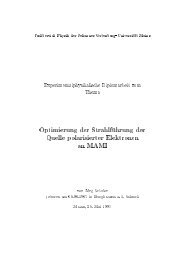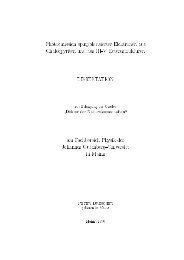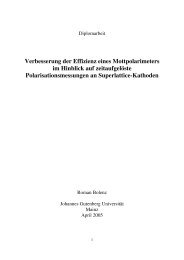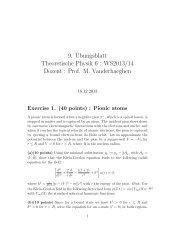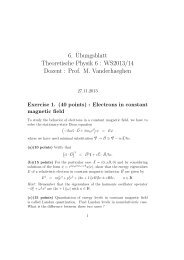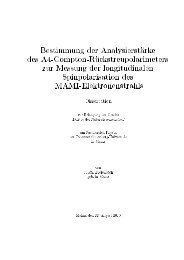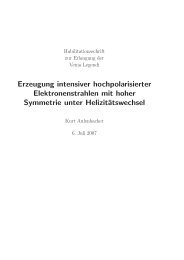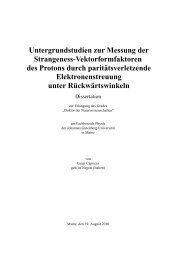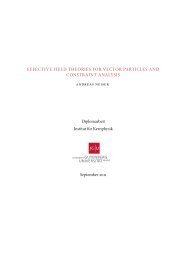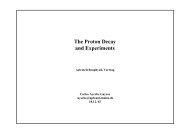Compton Scattering Sum Rules for Massive Vector Bosons
Compton Scattering Sum Rules for Massive Vector Bosons
Compton Scattering Sum Rules for Massive Vector Bosons
You also want an ePaper? Increase the reach of your titles
YUMPU automatically turns print PDFs into web optimized ePapers that Google loves.
1.3 S-Matrix Formalism and Dispersion Theory<br />
It immediately follows that F (ν) is analytic. Due to the Schwarz reflection principle,<br />
F (ν ∗ ) = F ∗ (ν), the amplitude is also analytic in the lower half plane.<br />
1.3.2 Dispersion Relations<br />
For a massive particle, the amplitude F (ν) will have branch cuts along the real axis,<br />
see fig. 1.1. Due to analyticity we can apply Cauchy’s theorem,<br />
F (ν) = 1 ∮<br />
2πi<br />
C<br />
dν ′<br />
ν ′ − ν F (ν′ ). (1.41)<br />
The integration path is shown in fig. 1.1. Since we are usually interested in physical<br />
Im F (ν)<br />
Re F (ν)<br />
−ν 0<br />
ν 0<br />
Figure 1.1: Contour of integration in the complex energy plane used to derive the<br />
dispersion relation. The half-circles are blown up to infinity.<br />
energies, we choose to evaluate F (ν) at ν = x + iε <strong>for</strong> real x. We can split the integral<br />
into curve integrals along the semicircles of radius R and parts along the real axis. If we<br />
let R → ∞, the parts along the contour vanish—assuming a sufficiently well-behaving<br />
9



